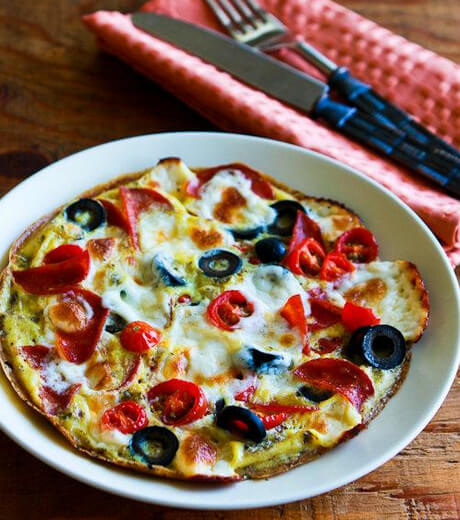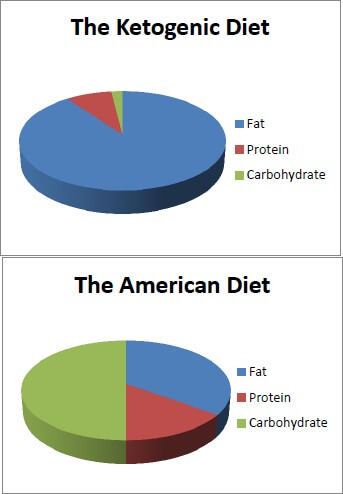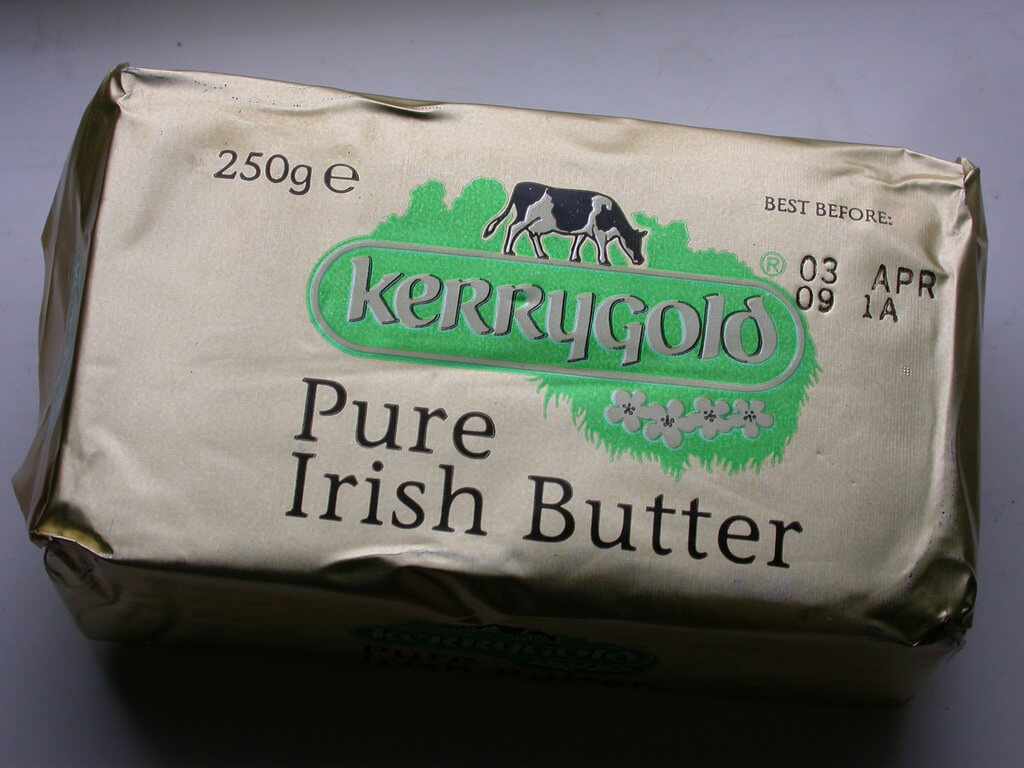So, you’ve heard about the Ketogenic diet and its benefits. Perhaps you’ve heard that it is recommended for those either with Diabetes or with Diabetes markers. Perhaps you’ve heard wonderful stories of effortless weight loss. Maybe you’ve found it because you’re tried endless diets or programs in an effort to find what is best for you (and you’re still hunting for the ‘one’).
But what is it and how do you start a ketogenic diet?
Well, the truth is that the Ketogenic Diet pretty much turns everything we have been told by the health authorities on its head. For several decades (since the 70s), the received wisdom was that a low-fat, high-carb diet was the thing for optimum health and performance. Saturated fats, we were told, were practically poisonous.
They clogged the arteries, and thus set you on the road to an early grave. You could look forward to heart surgery, and an endless barrage of pills to combat high blood pressure and arteriosclerosis.
So, at first glance, the Ketogenic diet looks like the exact opposite of what we are ‘supposed’ to do. But let’s take another, slightly closer look.
More recent studies have failed to establish a clear link between the consumption of saturated fat and the dreaded cholesterol levels. Also, a low-fat diet has been shown to not make a whole load of difference to those trying to attain their ideal weight. So what gives?
Well, the basic principle is this. The human body can get its energy from any of the ‘Macros’. These are Fats (or lipids), Carbohydrates (or sugars and starches) and Proteins. Any of these can be broken down by the body to give us the energy we need. In the classic low-fat diet, the principle source of energy is carbs, and low-fat protein is included for muscle repair. All fine and dandy. Except that, when we look at the figures, heart disease has been steadily on the rise since the low-fat guidelines were introduced in the 1970s. As have associated metabolic imbalance conditions like morbid obesity and Diabetes.
 So what about the fats?
So what about the fats?
In the Ketogenic diet, your meals are designed to principally supply your body with good fats to use as energy. Fats or lipids are the most energy-rich substances available to us – hence why our body uses them to store energy for times of need.
The body is capable of using fats almost exclusively for the production of energy, but most of us have been eating low-fat diets for so long that we need to re-train our system to work in this other way. This other way is called living in Ketosis or being keto-adapted.
(NB: Ketosis is not the same as Ketoacidosis, which is an aberrant condition that often goes along with Type I & II Diabetes.)
When your body goes into Ketosis, it means that it has become adapted to primarily burning fats for energy. The first and most interesting point for many people is that this encourages the body to burn the excess fats it has stored and thus develop and leaner, meaner physique.
Other super-cool benefits include relief from allergies, increased energy and increased mental clarity. No more energy slumps in the afternoon, wake up feeling refreshed and have high energy levels form the second you get up til the second you go to bed. Quite frankly, it’s the bees knees.
So, if you do it right, the Ketogenic diet can help you achieve your optimum weight/physique, give you more energy, throughout the day, and help with a whole host of niggling problems like acne, PMS, sleep issues and see-sawing energy levels.
Also, did I mention, the food is just great.
If you’ve been battling with food for a long time, fighting cravings and then inevitably giving in to them, gaining weight despite eating less, feeling moody, experiencing PMT, and only rarely allowing yourself to have lovely, tasty fatty foods, then the Ketogenic diet might just be the answer you’re looking for.
Let’s have a little chat about FATS shall we?
Well, first and foremost, it is essential to know that there is not one single metabolic process that does not involve the use of fats. Really? Yes really.
Let’s take the humble cell. You have 37.2 trillion of these little powerhouses making up your body. Bone cells, nerve cells, muscle cells, skin cells, liver cells, lung cells, blood cells, spleen cells, eye cells, you get the picture. Now, despite the fact that all of these cells are adapted to a different function in your body, they all share certain characteristics. One of them is the called the cell membrane. This is the semi-permeable barrier between the inside of the cell and the outside world. Every single cell. What is the cell membrane made of?
That’s right, FATS. It’s what’s called a phospholipid layer. Like I said, every single cell. That’s a lot of fat, right? Right.
Next up hormones. These are the known as the chemical messengers in your body. Hormones regulate everything that happens anywhere in your body. They carry messages for the nerve cells across the synaptic gap (the gap between two cells). There’s probably a few you’ve heard of like insulin or serotonin. You may have heard of dopamine, acetyl choline, and adrenaline.
The point is, they are used for everything. In particular a group called eicosanoids are just totally vital to every single process in your body.
There are a few hormones that are made from amino acids, but again the vast majority are manufactured from fatty acids – what your body breaks down fats into.
So, whatever your diet, it is important to get good fats in there.
 With the ketogenic diet, it’s not just a case of taking cod liver oil to make sure you’ve got enough, you eat plenty of fat in the first place, with every single meal. If this seems strange to you remember those hormones and those cell membranes – even muscle cells have a cell membrane, as well as a high protein content. And then remember those hormones, in particular those eicosanoids. When you take a look at how many processes those things are used in , it makes sense that lots of people find that multiple niggling health issues just disappear once they get onto the ketogenic diet.
With the ketogenic diet, it’s not just a case of taking cod liver oil to make sure you’ve got enough, you eat plenty of fat in the first place, with every single meal. If this seems strange to you remember those hormones and those cell membranes – even muscle cells have a cell membrane, as well as a high protein content. And then remember those hormones, in particular those eicosanoids. When you take a look at how many processes those things are used in , it makes sense that lots of people find that multiple niggling health issues just disappear once they get onto the ketogenic diet.
From mood regulation, to spot control, fats are so essential it’s untrue.
If you’re going to get into the ketogenic diet, it’s worth knowing why it can be so effective and also why there is so much fat in it – especially compared to the low-fat high-carb diet most of us have been brought up with.
Okay, so that’s enough of the reasons why you want to start on the Ketogenic diet.
I’m sure you can see the sense in it now, but how do you start?
Well, here’s a quick run-down of the steps to take before you take the plunge. Follow these, and your transition to ketosis should be relatively stress-free, and before you know it, you’ll be feeling the benefits of more energy, fewer allergies, clearer skin, a clearer head.
How to Start a Keto Diet
Before You Start
Do your research!
This article is obviously a good place to start, but it is worthwhile having a snoop around online to find some other peoples’ experiences of transitioning to the keto diet and other keto articles so that you know what you can expect. There are some great videos and blogs around which will, between them, fill in the details of what you need to know. In particular I recommend checking out Leanne Vogel from Healthful Pursuit.
Do your due diligence when it comes to research and the whole process of adapting to this new way of eating will be that much easier.
How to Prepare Your Kitchen
In an ideal world I would suggest going through your kitchen cupboards and just throwing or giving away anything that isn’t keto approved. But hey, we live in the real world and I know some people will have families and other halves and issues with throwing food away. That’s all fine. The thing is to decide what your plan is. You can just use up what you’ve got and replace with keto friendly foods, or go the whole hog and completely change your kitchen, it’s up to you.
There really isn’t any special equipment you need to start the keto diet. Yes there are some bits and bobs that are great to have in a keto kitchen, but you don’t need them to get started.
What worked really well for me was getting my kitchen really organised. I got rid of anything that was clearly just there to fuel my sugar and carb addiction, and then I cleaned and organised so that my kitchen was a lovely place to be.
Get Your Macros Straight
Macros! The most important part of the equation. Here’s what you need to know:
You want to be aiming for 80% fat, 15% protein and 5% carbs each day.
Fats:
For the adaptation phase (i.e. while your body is getting used to burning fats as its main fuel source), it’s best not to count calories. The important thing here is getting those carbs down and those fats up. You want to be aiming for over 150g of fats per day, and if you can get closer to 200g that’s even better.
I know it sounds like a lot, but you need to absolutely 100% let your body know that if it wants to survive, it’s gonna have to start burning fats. Period.
Once you have transitioned over to primarily burning fats as fuel, you can lower your fats and your body will start burning your body fat – and this is when the weight will effortlessly drop off. Oh yeah. 🙂
Eat grass-fed butter, tallow, lard, coconut oil, olive oil, avocados, olives, fatty meats, eggs. Eat all of the (good quality) fats. Avoid refined fats and low quality fats.
Protein:
Aim for 50-70g per day (assuming you are a woman, men can go a little higher). This is NOT a paleo diet! If you eat too much protein, your body will start breaking it down into glucose which will completely stall any efforts to become keto-adapted. I wish I’d known this in the beginning, the transition would have been so much faster!
Carbs:
Get most of your carbs from cruciferous vegetables. Cauliflower, broccoli, cabbage, green beans, courgette (zuchini). Load up on green salad leaves. Eat tomatoes in moderations (not cooked). Onions are relatively high in carbs to watch those too.
Avoid fruit. (One apple will send me straight out of ketosis.)
And no you can’t have 1 slice of bread per day and have that count as your carbs.
Electrolytes:
One of the first things to happen as you shift to this way of eating is you’ll lose a lot of water weight in a kind of ‘whoosh’. This happens in the first week as your body uses up its glycogen stores. It’s super important that you stay hydrated – drink more water. And that you replace lost electrolytes. You can do this by added celtic sea salt to your food and drinking water, use electrolyte replacement drinks (sugar free), drinking bouillon or making bone broth. (Yum).
Check out what keto foods I eat regularly over here in my keto pantry.
The Lazy Keto Hack
Eat three meals a day.
Each meal will have 2-3 cups of salad or cruciferous veggies, a small palm sized piece of fatty protein and 3-4 tablespoons of fat.
Add some good salt (Himlayan salt or celtic salt for example) to every meal and also your drinking water.
If you are hungry between meals, eat fats. There are lots of great fat bomb recipes around – just google them. Or you can blend in some coconut oil into tea (or coffee if you drink it).
Other great keto snacks included boiled eggs, avocado, cheese (if you’re good with dairy) and macadamia nuts. I like to keep a huge bowl of mixed salad and veggies in the fridge so I can grab a bowl, add some creamy dressing and munch away.
Ta-da!
That’s it.
Simples.
Bear in mind though, everyone is different and you should experiment with different foods and different portions until you find your own sweet spot. But for anyone who wants to just get started, like, now, this lazy keto hack is a good place to start.
How to Plan a Start Date
You may have heard of the keto flu. It’s a very common experience for anyone going low carb.
For the first few days you may find you have less energy at first, instead of more. You may feel more tired than usual, and you may experience some digestive upset as your body adapts. Those who train in the gym regularly may notice a drop in athletic ability.You may experience headaches, lethargy, runny nose and a dramatic reduction in appetite. Don’t worry about any of this, it passes!
You are taking steps to wean your body off carbohydrates and onto fats as a source of energy. You do this by primarily cutting out carbs and upping the fats. Until your body gets the message and fires up the fat-burning processes it’s going to be a little bit out of balance.
Similarly, the fact of your suddenly having all the fats your body needs is going to have an effect on all those metabolic processes we mentioned before.
The best thing to do for keto flu is to make sure you are getting enough salts in. Add some celtic sea salt to your water each time you drink and put it liberally over those delicious meals you’ll be eating.
So the best time to start a keto diet is when you have a few days where you can look after yourself, pamper yourself a bit even. Don’t start a keto diet when you have a deadline or a stressful time ahead. Start on a friday, and take monday off work and then plan to just enjoy relaxing as you make the transition.
Measuring Your Blood Sugar and Your Ketones
When I first started I bought some ketosticks which measure the ketones in your urine. These are fun to use and can be useful when you’re starting out, simply to see if your body has started producing ketones. BUT they are not very accurate and actually only measure one of of three types of ketones your body produces.
If you are serious about getting this right I highly recommend you purchase a blood glucose and ketone monitor.
Measure both your ketones and your blood sugar first thing in the morning before eating anything. The ideal measurements you’re looking for are:
Ketones – between 0.5 and 3mmol/l
Blood Glucose – lower than 4.4mmol/l (under 80 mg/dl)
Cold Turkey Or One Toe at a Time?
I’m a big fan of cold turkey. Both metaphorically and, you know, for lunch. My suggestion is, if you consider yourself relatively healthy just go cold turkey and get that first phase over and done with.
If you know you are going to be transitioning from a very high carb diet, or if you have adrenal issues, thyroid issues or other health concerns, it might suit you more to gradually lower your carbs and up the fats.
Nobody knows you like you do…. and switching to a keto diet is all about bringing out the best in you and your life, so pick a method that you know will work well for you.
Of course, if you are in any doubt – please contact a health care practitioner.
What Are You Waiting For!
Honestly, now you’ve got this information, you have everything you need to start. There will be an amount of learning and adjusting you will do on the way. Watch some videos, read some articles and just dive in.
It’ll be the best decision you’ve made in a long time.

